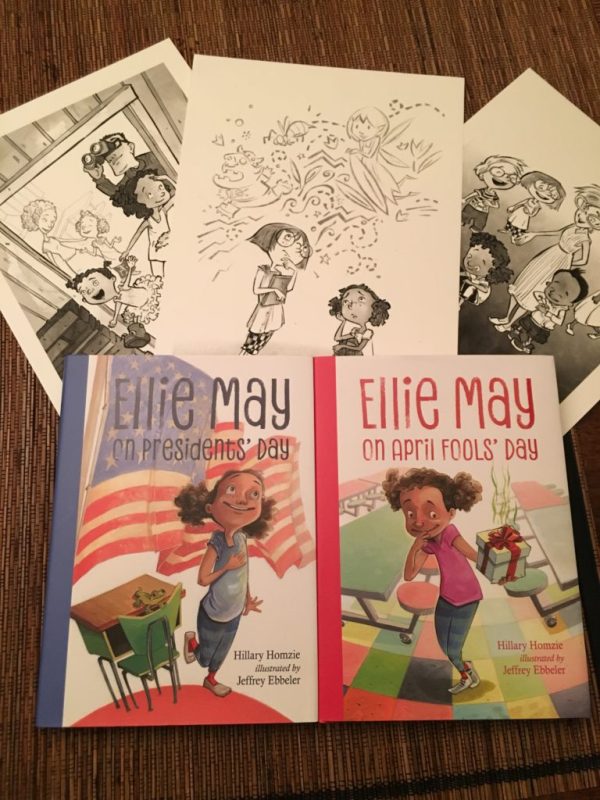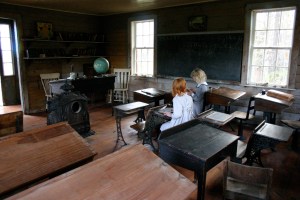Welcome to my interview with cartoonist and author Michael Fry! He’s the successful cartoonist of the internationally syndicated comic strip OVER THE HEDGE. His website is full colorful imagery and loads of humor – two of the wonderful elements you’ll find in GHOSTED, his new heavily illustrated middle grade novel. The book beams with Michael’s amazing artwork. It’s absolutely delightful! In the words of Publishers Weekly, GHOSTED “balances a serious premise with a gleefully manic energy” and how “Fry’s black-and-white linework—vibrant and just a little over-the-top—adds hilarity.”
I’ve seen the book, and couldn’t agree more!
GHOSTED: The Book
 From the best-selling author of the How to Be a Supervillain series comes this laugh-out-loud, heavily illustrated story of a shy boy, his best-friend-turned-ghost, and their bucket list of adventures and dares. Perfect for fans of the Timmy Failure and Diary of a Wimpy Kid series.
From the best-selling author of the How to Be a Supervillain series comes this laugh-out-loud, heavily illustrated story of a shy boy, his best-friend-turned-ghost, and their bucket list of adventures and dares. Perfect for fans of the Timmy Failure and Diary of a Wimpy Kid series.
Larry’s got a few problems. In school, he’s one of those kids who easily gets lost in the crowd. And Grimm, Larry’s best friend in the whole world, has ghosted him. Literally. One minute Grimm was saving a cat in a tree during a lightning storm, and the next, he’s pulling pranks on Larry in his new ghostly form.
When the two best friends realize that there’s something keeping Grimm tethered to their world, they decide that finishing their Totally To-Do bucket list is the perfect way to help Grimm with his unfinished business. Pulling hilarious pranks and shenanigans may be easier with a ghostly best friend, but as Larry and Grimm brave the scares of seventh grade, they realize that saying goodbye might just be the scariest part of middle school.
For more: HMH Books
The Interview
We are very excited for your visit and super excited to hear more about GHOSTED. Please share with our readers what sparked the idea to write this story?
Ghosted is a work-for-hire. HMH came to me with the basic idea: Larry, his dead/ghost friend Grimm and the Totally To-Do List and I filled in the rest.
What about your two main characters, Larry and Grimm? Tell us about them.
Larry and Grimm are opposites. Larry is shy and introverted. Grimm is loud and outgoing. Grimm pushes Larry to be more than he is. Larry pushes Grimm, eventually, to realize WHO he is. Also, Larry is alive and Grimm is dead. So, there’s that.
Grimm’s realization gives me shivers. I love how these two play against each other, yet for each other. 💖
The subject of death is always in the background throughout the story. Share how you showed the internal growth of this unique friendship and how the character’s faced the inevitable.
I tried to write Ghosted as realistically as possible. I tried to imagine what it would be like, in the real world, to have a best friend come back as a ghost. On the one hand, it’s very cool. On the other, it’s very sad. Grimm exists, but he can’t touch anything. Nothing can touch him. He’s present, but he’s not really there. It’s an exaggerated version of losing any loved one. You feel their presence, yet they’re gone. At points in the story Larry wonders if what he’s experiencing is real. He wants Grimm to be there, but I don’t think he’s ever really sure if he is.
The way you worded this is so touching. I’m sure many young readers, as well as their parents, will ponder the truths of this tale. What was your favorite part of writing GHOSTED and why?
I liked writing the therapy stuff. I’ve had a lot of therapy and it gave me a chance write from experience. The bit where Larry cries when Dr Hank (as an adult) expresses sympathy is very personal. As a kid, you don’t always expect adults to be so sensitive. When they are, it can be overwhelming.
Is there anything about the story that surprised you while working on this book?
I was worried about mixing comedy and pathos. It’s hard to do well. Too much of one and not enough of the other is a danger. But I think it worked out. It’s silly and sad.
For our readers who might be interested in adding illustrations to their writing or those simply just curious, what differences do you find in being a cartoonist from telling a story as an author/illustrator?
Room to write! I’ve been a syndicated cartoonist for over 35 years and comic strips have gotten smaller and smaller. I’m of the age now where I can barely read my own strip in the papers. I really love stretching out with a novel. There’s plenty of room to wander around.
What are your processes for both?
I write the story in Word and leave blue boxes with notes for the art. Later I rough out the art as I rewrite. Writing is rewriting. My books go through dozens of drafts.
Insight🔮
Give us one aspect of publishing that most readers aren’t aware an author/a book goes through before release.
Not so much on Ghosted, but there can be a lot of back and forth worrying about taking offense. On a previous book of mine I had a kid super-hero character whose superpower was reading minds. The problem was he’s dyslexic. I thought it was a really clever joke. My editor worried that kids (mostly parents) would think I was making fun of kids with dyslexia. I argued that was certainly not my intention and I think my intention matters. I eventually won out. But, the truth is, whenever I would read that passage to kids on author visits it only got a laugh from the adults in the room (teachers, librarians). Not the kids. It’s really an adult joke. So, maybe my editor was right.
What written middle grade novel (or any novel, really) would you like to see told in illustrations or graphic novel format?
Huckleberry Finn. It’s my favorite work of American literature. I bet it would make a terrific graphic novel.
Fantastic choice! It would be wonderful to read Finn’s tale in the setting of a graphic novel. Hint, hint . . . Thank you for taking the time to stop by and for sharing GHOSTED with us! It’s been a pleasure.
Mixed-Up Readers – have a young reader who loves illustrated books or graphic novels? Check out this STEM illustrated book featured HERE.
🗒️The Cartoonist & Author✏️

Michael Fry is the best selling author of the Jimmy Patterson Presents How to Be a Supervillain series. A cartoonist for over thirty years, Michael is the co creator and writer of the Over the Hedge comic strip which was turned into a DreamWorks film starring Bruce Willis and William Shatner. He lives near Austin, TX.


































